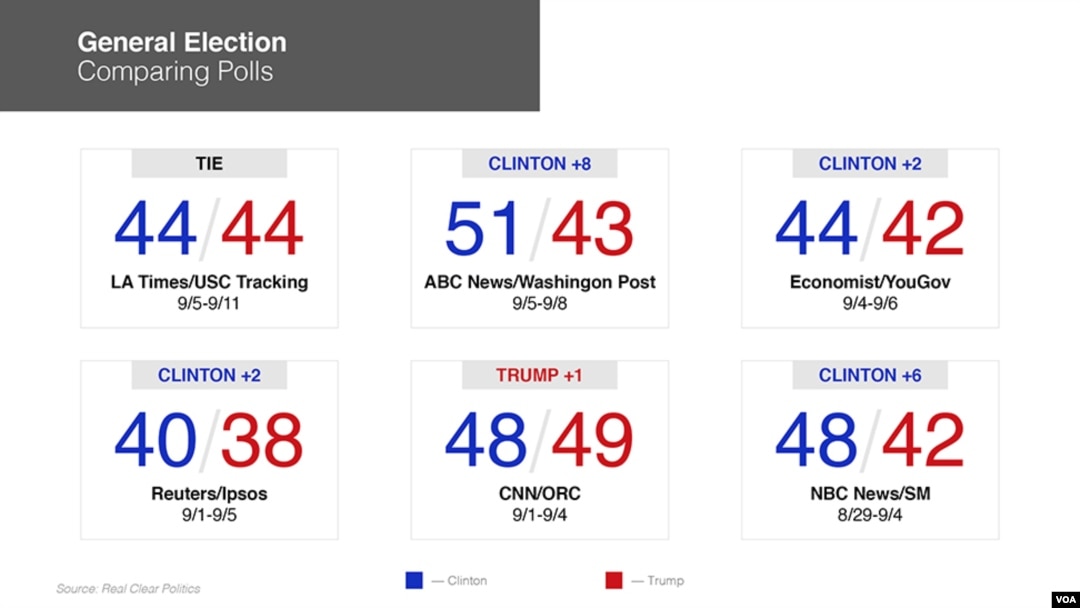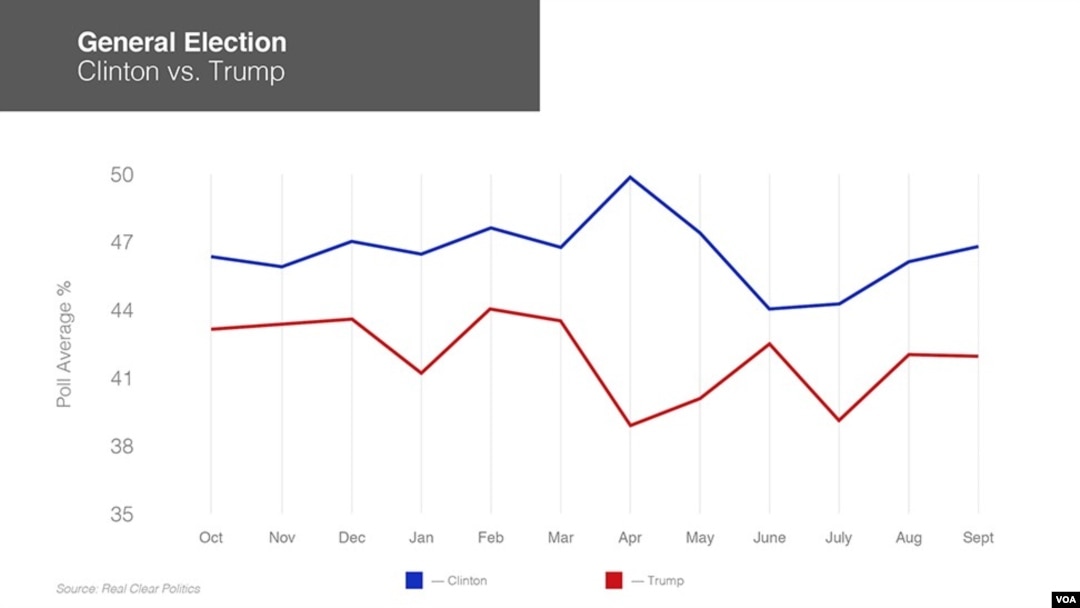Since the start of the general election, Democratic presidential nominee Hillary Clinton has enjoyed a significant and fairly consistent lead over her Republican rival Donald Trump in most national opinion polls.
Although her lead has shrunk in recent weeks, Clinton still leads Trump by about three percentage points, according to an average of polls by the website RealClearPolitics.
Occasionally, however, Trump will point to a poll suggesting he is tied or even ahead of Clinton.
For many casual observers, this is confusing.
Your browser doesn’t support HTML5
Expert: Polls Will Change Often Before Election Day
In an age of highly complex and scientific methods, why is one poll so much different from another? And with all that conflicting data, how are you supposed to know who really has the better chance of winning?

Here are a few things to remember about polls:
1. Focus on the big picture
Although shocking polls can generate big headlines, that doesn't necessarily mean they reflect reality. While outlier polls sometimes reflect a new trend, often they're just an aberration. For a clearer picture, focus on polling aggregators, which bring together data from many different polls to produce an average. FiveThirtyEight and RealClearPolitics each produce well-respected polling averages.
2. Not all polling groups are created equal
While many polling organizations are non-partisan and use well-respected methods, some have ideological leanings or are funded by partisan groups - factors that can lead to skewed data. Other polling firms have a reputation for producing polls that seem meant mainly for generating amusing headlines. It's important to know the difference.
3. Polls use different methodologies
Traditionally, most respected opinion polls have been conducted over the phone. But that is gradually changing. Now, many polls are conducted online. But while an online poll shouldn't automatically be dismissed, it should be treated with skepticism, as it is very hard to obtain a representative sample on the Internet.
Other factors to consider: Was the poll's sample size large enough? Did it take into consideration the opinions of those who were actually likely to vote?
4. Swing states matter
While national polls are useful for detecting large trends, they aren't the only polls that matter, especially because the U.S. presidential election is not decided by a popular vote. Instead, the election is determined based on voting results in each of the 50 states.
Most states tend to either vote Democratic or Republican every election, regardless of the candidate. The ones that are up-for-grabs are known as "swing states."
As the election draws closer, it will be just as important to track opinion polls in these swing states, the most important of which traditionally are Florida, Ohio, Iowa, Colorado, Nevada and New Hampshire.
5. Polls don't predict the future
As the saying goes, polls are just a snapshot in time. They do not necessarily indicate what will happen in the future. As November 8 approaches, things can change quickly. Among the factors that could still sway public opinion: the televised debates, release (or non-release) of public records such as tax returns or medical records, and unexpected illnesses.


